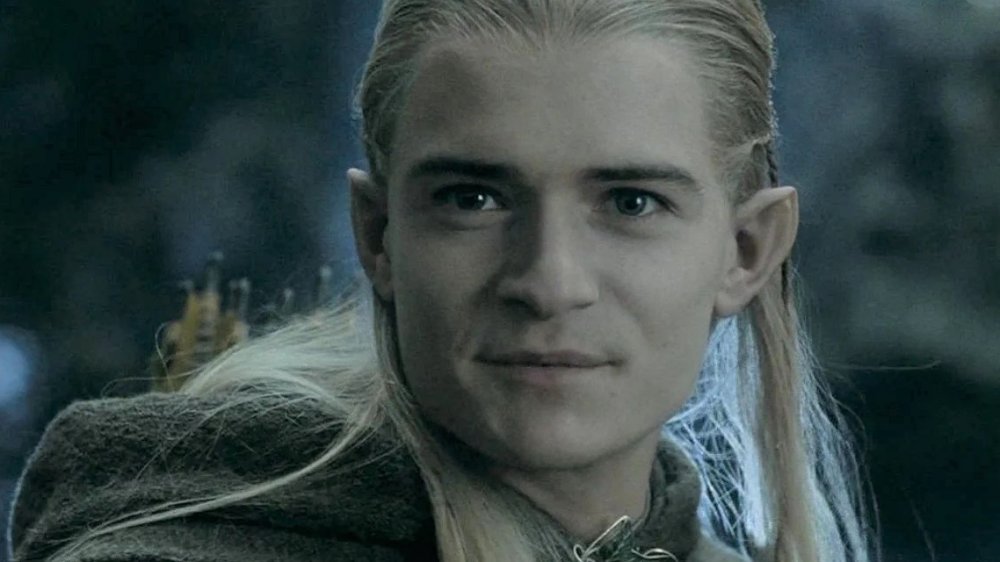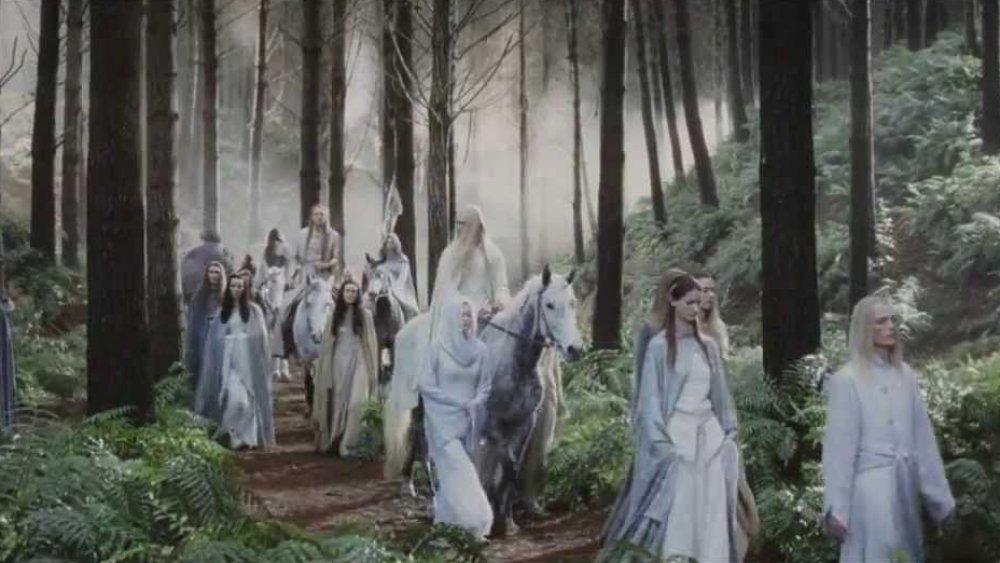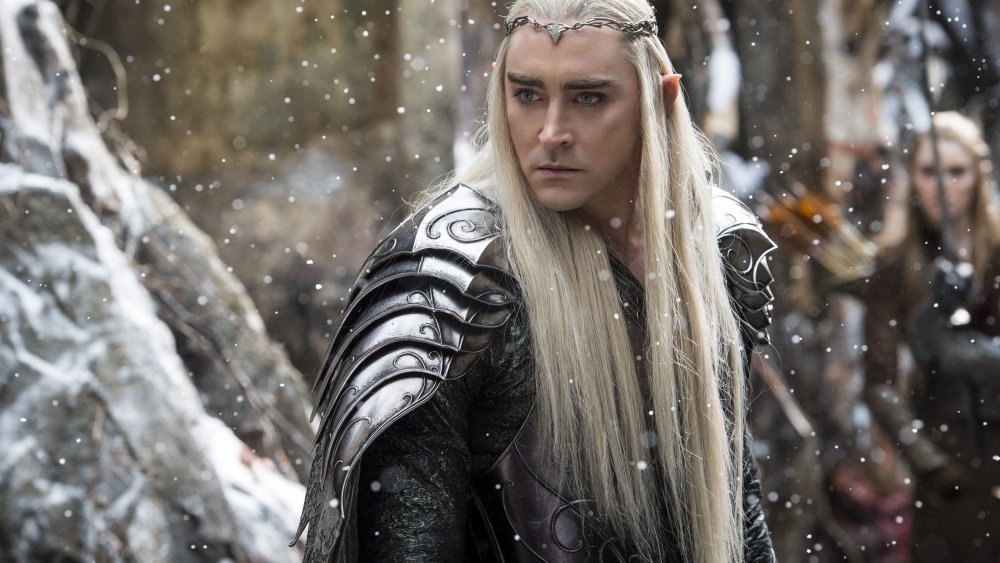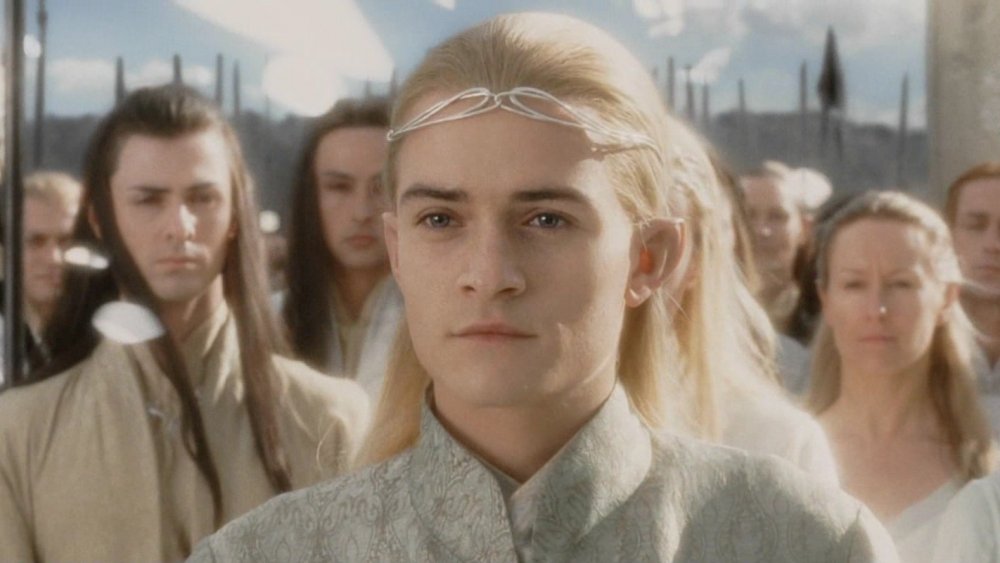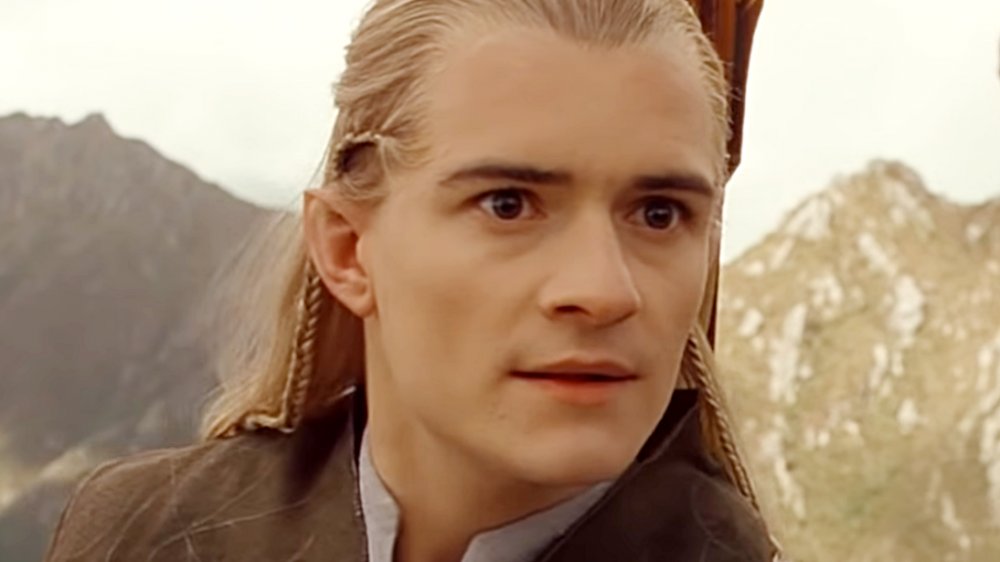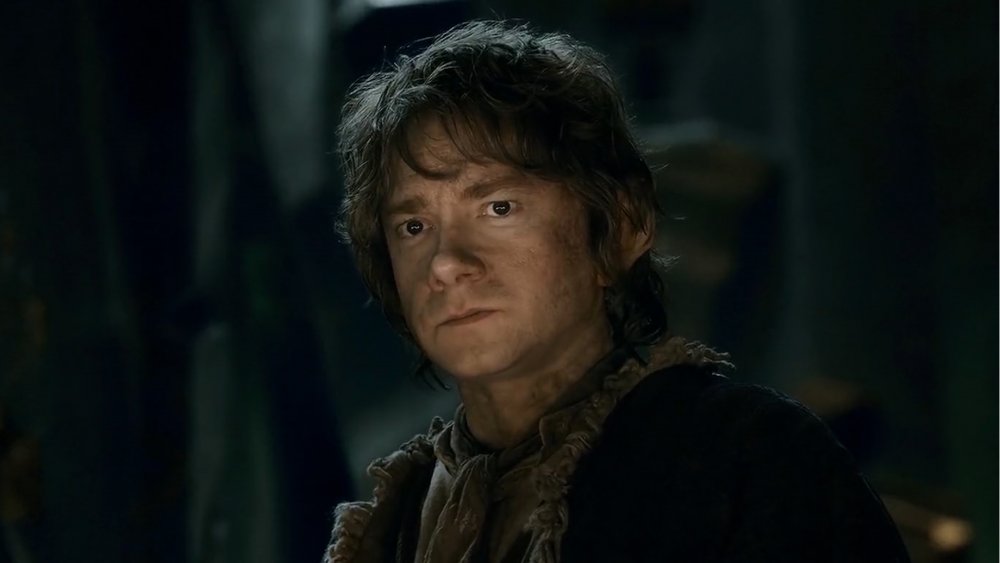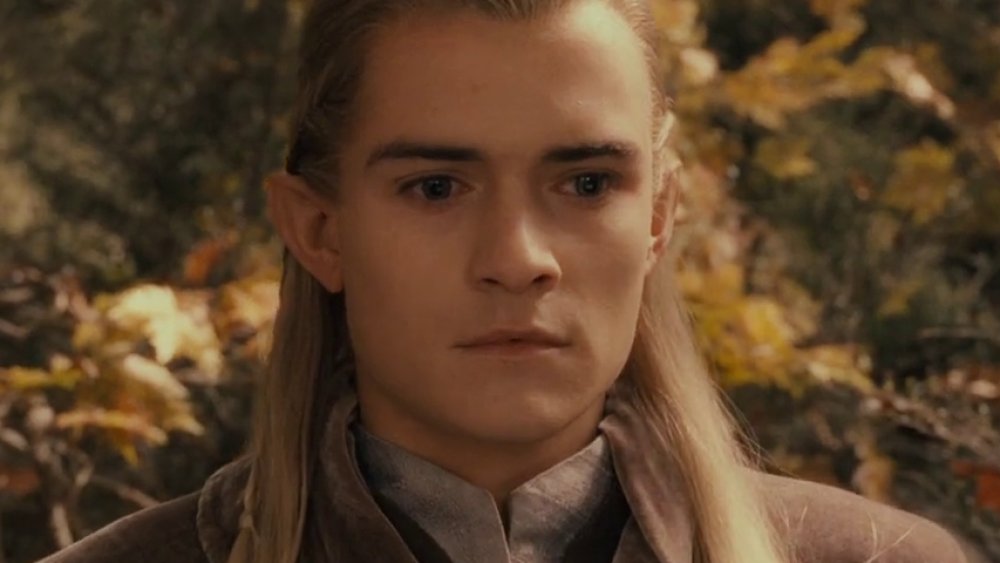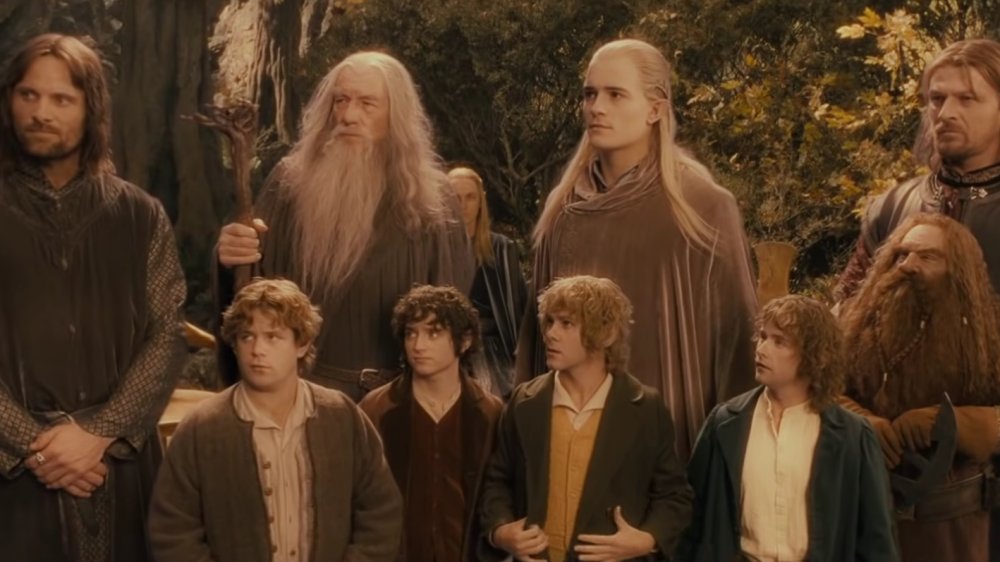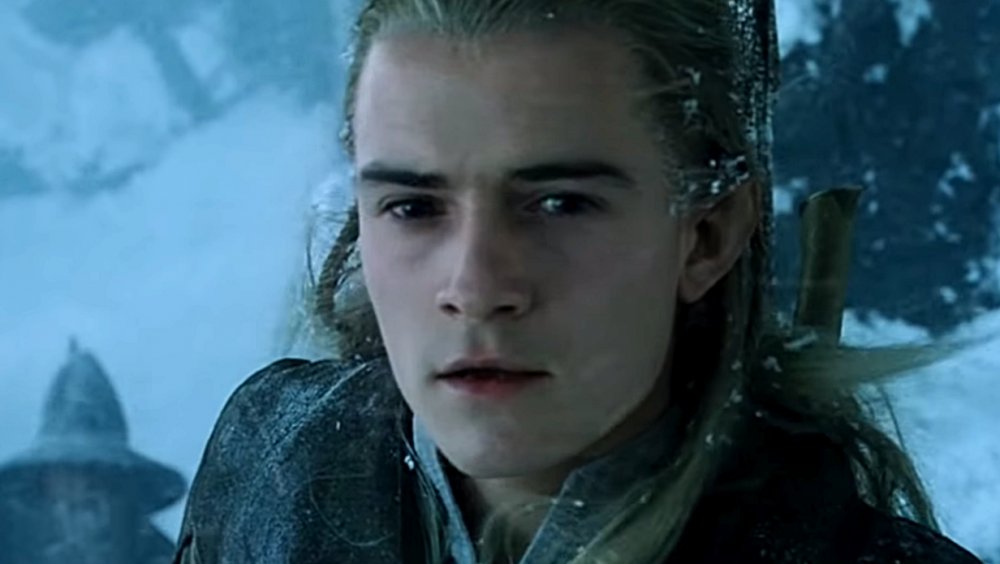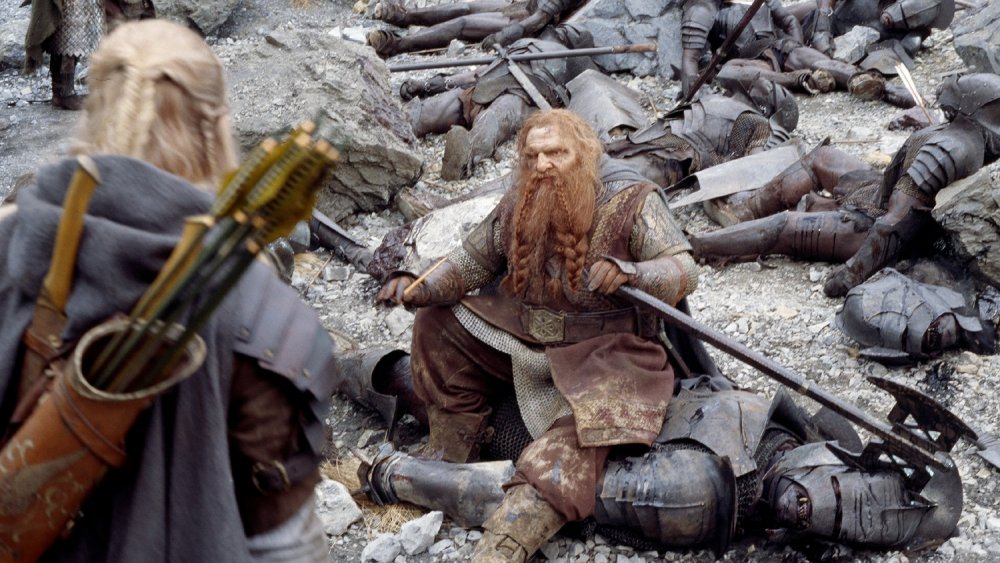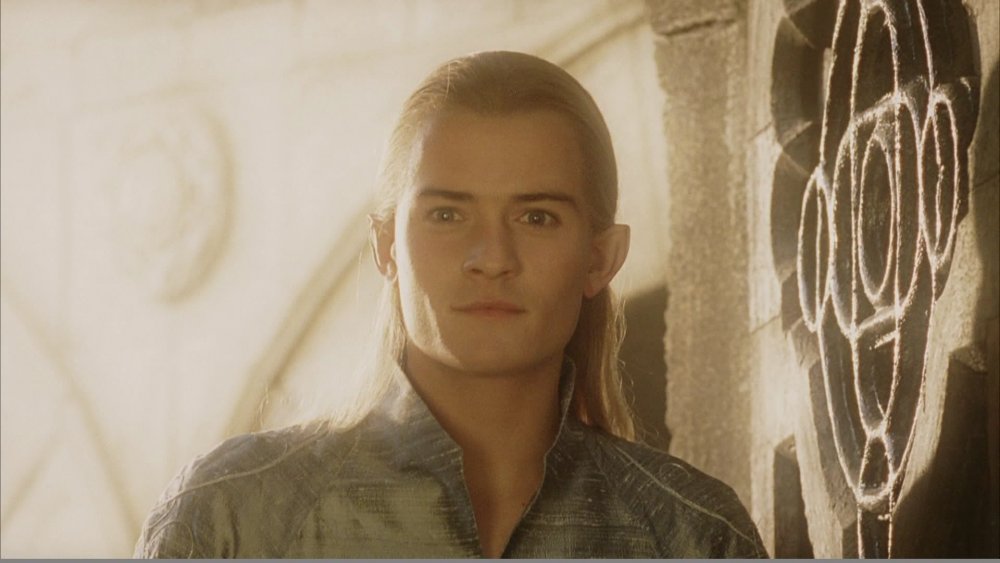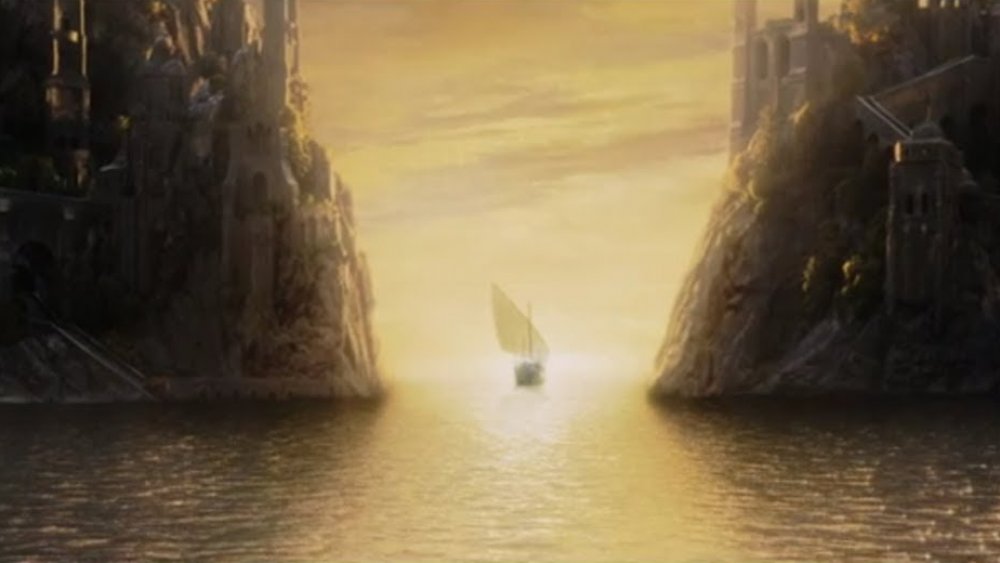Legolas' Entire Backstory Explained
There are few characters in all of J.R.R. Tolkien's legendarium with more importance and less information than Legolas. Other essential characters, like Aragorn, Galadriel, and even the Dark Lord Sauron, all receive fairly extensive backstories, tracing the ups and downs of their career arcs from beginning to end. And yet, the full story of Legolas — an immortal elf whose life likely spans centuries and possibly even millennia of Middle-earth's often tumultuous history — was never truly fleshed out by his creator.
Nevertheless, even at his shallowest, the author of The Lord of the Rings still provided a plethora of facts and historical anecdotes to work with. After all, in spite of the lack of detailed information, its still fairly common knowledge that Legolas is a prince, a warrior, an ambassador, and a member of the Fellowship of the Ring. In addition, the cinematic representation of the character has brought about some interesting — albeit upsetting to fans of the books — complications to his story.
We decided to dive into the history of this uber-popular yet enduringly mysterious elven prince in order to piece together as much of his past as possible. From his mysterious origins to his bittersweet ending, here's the complete (as possible) backstory of Legolas.
Legolas' elven history
While Legolas' past may be a bit murky, the history of his race is anything but. Tolkien went to great pains to explain the epically traumatizing past of the elves, most of which takes place in the First Age of Middle-earth's history and is outlined in The Silmarillion. The bulk of this history focuses on the branches of the elven people who migrate far over the Western Sea to the Blessed Realm. Eventually, they return to Middle-earth and quarrel with Sauron's master, Morgoth — and if you're wondering, yes, it's an incredibly convoluted story that leads to the near destruction of the elves, the fall of Morgoth, and the rise of Sauron to replace him. Never fear, though. We don't need to get caught up in those details here.
Fortunately for those interested in Legolas' history, the elven people living in Mirkwood during The Hobbit and The Lord of the Rings stories have a much simpler past. While other elves proceed to head west and partake in the catastrophic wars of the First Age, many choose to remain behind, living simple lives out of the spotlight and in harmony with nature. These elves are generally referred to as Silvan elves. A group of these quiet, nature-loving individuals head northeast early in the Second Age and begin to settle in a giant forested region known as Greenwood the Great — the same area that will eventually become known by the brooding name of Mirkwood.
Legolas' people migrate north
In Tolkien's book Unfinished Tales, he explains that over time, the Silvan elves migrate — likely in three "waves" or events — further north into the woods that they inhabit. Three different motives are offered for this gradual migration. The Silvan elves are fairly private individuals, and it's suggested that they're simply looking to create some distance between themselves and their relatives in Lothlorien who eventually come under the strong-willed leadership of Celeborn and Galadriel.
In addition, it's suggested that they want to create some space between themselves and the prosperous dwarves busily thriving in Khazad-dûm at the time. Finally, it's mentioned at another point in the book that their king, disturbed by the rising power of Sauron, decides to move his people further north, away from the action. Regardless of the specific motivations, the takeaway here is that gradually, over the course of the Second Age, a powerful group of Silvan elves establish themselves further and further north in Greenwood the Great. Initially, their kingdom is large — expanding beyond the edges of the woods and possibly even right around the Lonely Mountain for a while — and they're consistently ruled by the same father/son duo for centuries.
Passing the royal baton
The first king of the Woodland Realm in Mirkwood is an elven lord named Oropher. He leads his people as they relocate over and over again deeper into the woods. Eventually, though, he acknowledges the need to resist the spreading power of Sauron, and he leads an army to fight in the Last Alliance (that is, the gigantic war depicted in the opening sequence of The Fellowship of the Ring film).
The elves are successful in the war, and Sauron is temporarily vanquished. However, two-thirds of the Silvan army is destroyed in the fighting, and their king loses his life, to boot. In fact, many of their dead corpses, along with others who died in the fighting, are the ones that end up haunting the Dead Marshes that Frodo, Sam, and Gollum cross in The Two Towers.
When Oropher falls in battle, his son, Lee Pace — er, Thranduil (sorry about that) — takes over the reins and becomes the new king. Over the course of the Third Age that follows, Thranduil finds himself leading an ever-shrinking kingdom. This is partly due to the fact that the Necromancer and his minions have set up shop in the southern portion of the woods and are spreading out quickly. Eventually, dwarves — who are infamously unfriendly with elves — show up at the Lonely Mountain to the east, followed by Smaug the dragon, who turns the area into a desolate wasteland. Needless to say, while still strong, Thranduil's kingdom can hardly be said to be thriving at this point.
Little Legolas is born
With his enemies closing in on him and with his realm shrinking all the time, Thranduil decides to officially relocate his kingdom to the far northeastern portion of Mirkwood. This is the area where we meet the elven king when Bilbo and his dwarven companions are captured in The Hobbit. Once in his new home, Thranduil digs in — literally, he builds his huge subterranean palace at this point — and holes up, protected by his elven warriors and the enchanted river that runs through his lands.
Oh yeah, and at some point along the way, he also has a son named Legolas. Did we forget to mention that? Perhaps it's because Tolkien did, too (more on that in a sec).
Anyway, Legolas is the son of Thranduil and the grandson of Oropher. That also makes him a prince and — barring any hidden older siblings that Tolkien neglected to mention — the heir to the throne of the Woodland Realm. In spite of his significant importance as a potential future leader of the kingdom, though, it's never stated precisely when Legolas is born. In fact, in spite of his royal lineage and proximity to power, Legolas' early life remains permanently shrouded in mystery.
How old is Legolas?
The mystery of Legolas' birth and early life naturally gives rise to the question how old is he? Fortunately, there's a clue that Tolkien gave that provides a little direction, though it isn't much.
In the book The Two Towers, Legolas, Aragorn, Gimli, and Gandalf discuss the history of Rohan as they arrive in the capital of that dominion, the city of Edoras. As they talk about the age of the equestrian kingdom, Legolas casually states that, "500 times have the red leaves fallen in Mirkwood in my home since then ... and but a little while does that seem to us." The ability for the elf to shrug off five centuries as if they were as many months seems to indicate that the dude is really, really old.
Nevertheless, throughout all of the history of the Silvan elves, the Woodland Realm, Oropher, and even Thranduil, the birth and youth of Legolas are never brought up. Heck, his presence isn't even mentioned. On top of that, to make a guess even more difficult, when you're dealing with immortal folk, it's not like there's an obvious cutoff point after which the princeling must've been born. When the War of the Ring rolls around, the Woodland Realm has already existed for roughly 5,000-6,000 years — and there's no reason to think Legolas couldn't have been born before the realm was founded, anyway. Suffice it to say that Legolas' age will forever remain an enigma.
Crossing paths with Bilbo
While Legolas' quiet, centuries-old early life is difficult to unravel, when he finally arrives on the scene, he shows up everywhere. The first place that we meet the elven prince is in the cinematic version of The Hobbit. Now, one thing should be made clear right from the get-go. Legolas is not in the book version of The Hobbit. In other words, anything that you see in the Peter Jackson films is purely fabricated for the movie adaptation.
Nevertheless, it does give us, at the least, what amounts to a glorified fan-fiction version of what Legolas might've been up to before the War of the Ring. Not surprisingly, we find the elf gallivanting around Mirkwood, hunting spiders, hating dwarves, and generally helping his father rule the kingdom. His overtly beefed-up role balloons from there as he repeatedly gets involved in the quest. In the process, the audience finds out about his dead mother and witnesses a strange scene in which Thranduil sends him off in search of Aragorn.
Okay — except, what? First of all, his mother is never mentioned anywhere in the original source material, and when it comes to The Hobbit, neither is Legolas. And a journey to link up with Strider the Ranger? While it could theoretically fit into the timeline, the connection isn't necessary, nor does it make sense that a centuries-old elf would need to hunt down a mortal man to help in his apparently delayed adolescence. The whole thing is messy, to say the least.
The Council of Elrond
While his presence in The Hobbit trilogy was a bit of a mess, Legolas' story really picks up steam (in both the books and the movies) during the Council of Elrond. While Legolas ends up being sucked into the whole One Ring business due to his presence in Rivendell, the elf prince original shows up on the scene not as a counselor, nor as a warrior, but as a messenger.
A while before the council takes place, Aragorn captures Gollum and deposits him with the Wood elves for safekeeping. Gandalf eventually shows up to interrogate him, and then he's once again left in the safe care of his elvish captors. Showing pity on the wretched creature, the elves allow Gollum to spend time out of his cell and even outdoors. One day, Gollum's guards are ambushed by orcs, and the villain escapes. The elves realize the amount of coordination required to execute a jailbreak of that complexity. They also know the importance of Gollum's captivity — not to mention the fact that his escape threatens the safety of the One Ring. With all of this in mind, Legolas is sent to Rivendell to report the bad news and put everyone on their guard.
Joining the Fellowship of the Ring
Once he arrives in Rivendell, Legolas delivers the news of Gollum's escape during the Council of Elrond — an event that he happens to coincidentally attend just in the nick of time. However, while he arrives as a mere messenger, over the course of the council, Legolas learns of the finding of the One Ring and the sheer desperation of the situation.
Rather than hightail it back to his people in Mirkwood, the royal elf decides to offer his services in the War of the Ring. His combination of experience, skills, and aristocratic connections makes him uniquely important, and he ends up being chosen by Elrond as one of the members of the Fellowship of the Ring. This is already an honor, but it turns out that he's chosen as the only elvish representative on staff. In other words, Legolas beats out a myriad of other top-notch elvish warriors living in Rivendell in order to land a spot as one of the Nine Walkers. It's a fact that shows just how important and respected he is in the elven world by this time.
Legolas' adventures with the Fellowship
Legolas plays an essential part in the adventures that follow the forming of the Fellowship of the Ring. Throughout the journey, his light demeanor encourages the company and keeps their spirits up when things are difficult. When the group is attacked in Moria, he helps to fend off attacking orcs, and he serves as a translator and diplomat when they enter Lothlorian, the home of his distant relatives.
When the Fellowship is attacked and scattered, Legolas once again shows his mettle as he hunts numerous orcs through the woods. The elven prince then joins Aragorn and Gimli as they pursue the uruk-hai that have kidnapped Merry and Pippin. They chase their enemies into Rohan where they change course, and Legolas proceeds to participate in the defense of Helm's Deep — where he kills precisely 41 of Saruman's soldiers.
Eventually, he continues on with his two companions, helping Aragorn travel the Paths of the Dead, retrieve the Army of the Dead, and liberate Minas Tirith before it falls. From there, he joins in the desperate last-stand march on the Black Gate, and he's present when the One Ring is finally destroyed. From beginning to end, Legolas remains intimately involved in the War of the Ring, representing elves from one end of Middle-earth to the other along the way.
Best buds ... with a dwarf?
By the time of the War of the Ring, Legolas is a wise, experienced elven warrior, so neither his involvement in secret councils nor his battlefield success comes as much of a surprise. However, there's one aspect of his adventures that's extremely radical ... the fact that he readily and willingly fights alongside a dwarf.
Legolas' eventual affinity for Gimli is a powerful testimony to the ability of friendship to overcome even the deepest-seated hatred, animosity, and racism. Historically, Gimli and Legolas shouldn't be friends at all. While their races have occasionally gotten along with each other at times — like when they joined together out of necessity during the Battle of Five Armies — there are many instances across the ages when they've fought, deceived, and backstabbed one another and generally been at each other's throats.
Realistically, few dwarves manage to actively maintain relationships with elves throughout all of Tolkien's writings — with the one, beautifully odd exception of Legolas and Gimli. The pair begin their adventures with a cold "arm's length" respect for one another. Over time, though, as they go through the war together and help each other through numerous dangers, the distance breaks down and is replaced with a jovial, joined-at-the-hip mentality. The best part? It doesn't end after The Lord of the Rings story, either. The two remain fast friends to the end of their days.
Aftermath and Ithilien
After the War of the Ring, Legolas partakes in the celebrations and then remains with the other members of the Fellowship in Minas Tirith for a while. Eventually, the group leaves Minas Tirith, sticking together as long as they can as they slowly creep towards their respective homes. Before they get there, though, Legolas and Gimli split off from the crew to fulfill a promise that the pair made to each other to visit both the Glittering Caves of Aglarond in Rohan and the ents in Fangorn Forest.
While Legolas does eventually finds his way back to his woodland home, he doesn't stay there for long, either. He gathers some of his people, and with the leave of his father and king, he leads them back south to Gondor. There, they settle down in Ithilien, the garden-like region in the east of the nation where Frodo and Sam had been captured by Faramir long before. And the former prince of Mirkwood remains there for a long time. In the appendix to The Return of the King, it's said that during this time, the land "became once again the fairest country in all the westlands."
The sea calls to Legolas
Legolas faithfully remains in close proximity to both Aragorn in Gondor and Gimli — who becomes the lord of the Glittering Caves — in Rohan. As the years and then the decades creep by, though, he can't resist the growing desire in his heart to follow the sea away to the Blessed Realm far in the west, the same area that Frodo and Sam sail to at the end of The Lord of the Rings.
In fact, it's a longing that's predicted more than once during the story. In The Two Towers, Galadriel sends a message to Legolas warning him that, "If thou hearest the cry of the gull on the shore, thy heart shall then rest in the forest no more." Then, in The Return of the King, when he hears said gulls, he exclaims, "Alas for the wailing of the gulls ... now I cannot forget them." And he doesn't, either.
When Aragorn finally passes away, 120 years after becoming king, Legolas builds a ship and finally sets sail for the Blessed Realm. While he doesn't die, that's the last that we hear of the elven hero. The event comes with one final, heartwarming, bittersweet moment, reported in the appendix of The Return of the King, where it states, "With him, it is said, went Gimli the dwarf. And when that ship passed, an end was come in Middle-earth of the Fellowship of the Ring."
